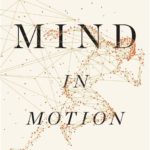By now you know that retrieval practice has lots (and lots) (and LOTS) of research behind it. (If you’d like a handy comprehensive resource, check out this website. Or this book.)
The short version: don’t have students review by putting information back into their brains — say, by rereading a chapter. Instead, have them pull information out of their brains — say, by quizzing themselves on that chapter.
It’s REALLY effective.
When we know that a technique works in general, we start asking increasingly precise questions about it.
Does it work for children and adult learners? (Yes.)
Does it work for facts and concepts? (Yes.)
Does it work for physical skills? (Yes.)
Does it work when students do badly on their retrieval practice exercises? Um. This is awkward. Not so much…
That is: when students score below 50% on a retrieval practice exercise, then retrieval practices is less helpful than simple review.
How do we fix this problem?
“Diminishing Cues” and Common Sense
Let’s say I want to explain Posner and Rothbart’s “Tripartite Theory of Attention.” In their research, attention results from three cognitive sub-processes: “alertness,” “orienting,” and “executive attention.”
Depending on the complexity of the information I provide, this explanation might get confusing. If a retrieval practice exercise simply asks students to name those three processes, they might not do very well.
Common sense suggests a simple strategy: diminishing cues.
The first time I do a retrieval practice exercise on this topic, I provide substantial cues:
“Fill in these blanks: Posner and Rothbart say that attention results from al______, or_____, and ex_______ at______.”
A few days later, I might ask:
“Fill in these blanks: Posner and Rothbart say that attention results from ______, _____, and _______ ______.”
A week later:
“What three sub-processes create attention, in Posner and Rothbart’s view?”
And finally:
“Describe how attention works.”
The first instance requires students to retrieve, but offers lots of support for that retrieval. Over time, they have to do more and more of the cognitive work. By the end, I’m asking a pure retrieval question.
“Diminishing Cues” and Research
So, common sense tells us this strategy might work. In fact, I know teachers who have stumbled across this approach on their own.
Here at Learning and the Brain, we like common sense and we REALLY like research. Do we have research to support our instincts?
Yes.
In 2017, two researchers put together an impressive combination of studies.
They looked at different study strategies: review, retrieval practice, diminishing-cues retrieval practice.
They tested participants after different lengths of time: right away, 24 hours later, a week later.
They tested different amounts of studying: 3 sessions, 6 sessions…
You get the idea.
Because they ran SO MANY studies, they’ve got LOTS of data to report.
The short version: “diminishing cues retrieval practice” ALWAYS helped more than traditional review (rereading the chapter). And it OFTEN helped more than plain-old retrieval practice (self-quizzing on the chapter).
If you want the details, you can check out the study yourself; it’s not terribly jargony. The process is a bit complicated, but the key concepts are easy to grasp.
To Sum Up
Retrieval practice helps students learn.
If we want to ensure that it works optimally, we should use it multiple times — and successively remove more and more scaffolding from the retrieval practice questions we ask.
Common sense and research agree.




